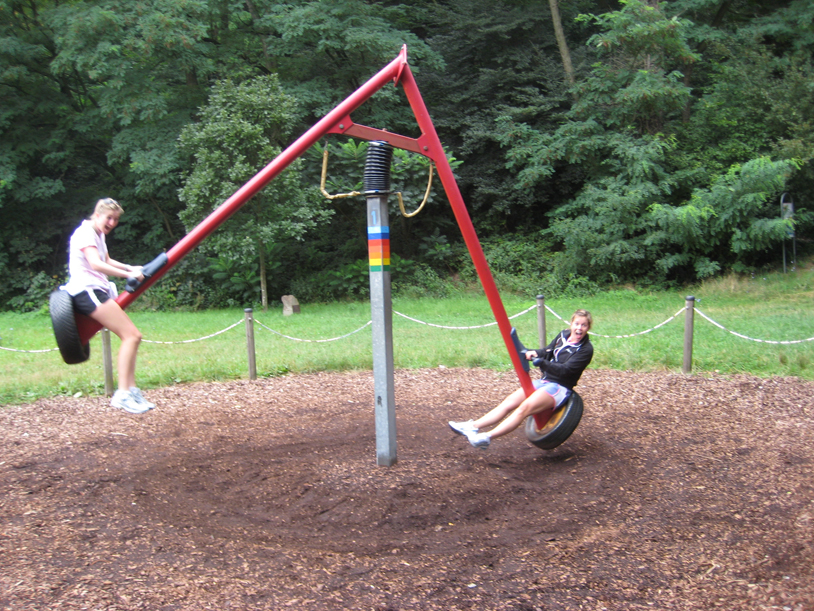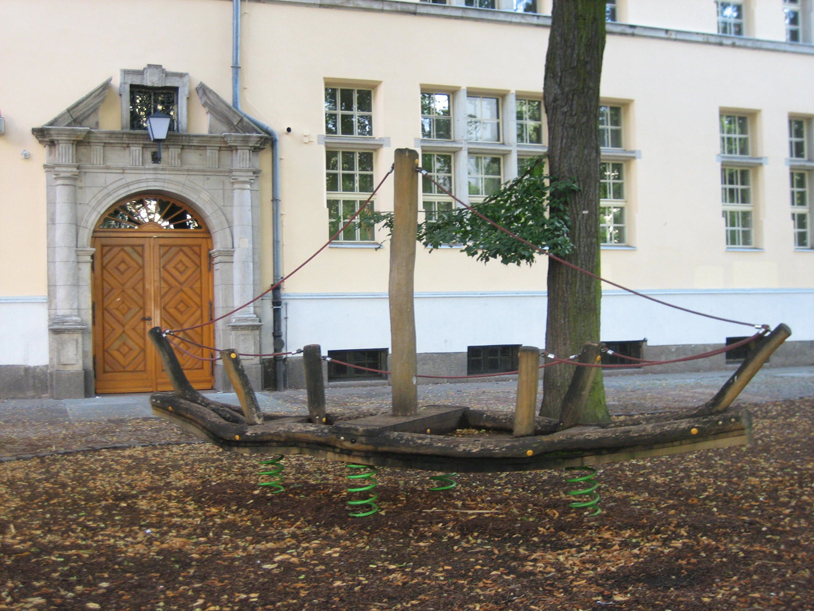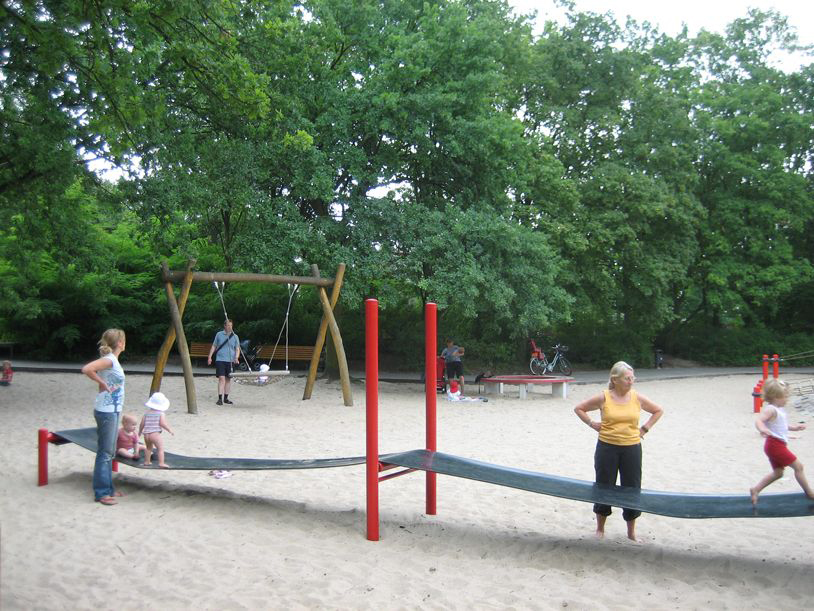
The see-saw is probably one of the most vilified pieces of equipment you will find on a playground. When I started writing this piece, my intention was to show some of the many examples I found last summer, while on a fellowship in Germany, of how designers have tried to make the see-saw safer.
Anecdotally, I had heard from a variety of sources, experts and otherwise, that the see-saw is largely to blame for the severed fingers, broken limbs, head injuries and bullying antics that occur on playgrounds—hence, their general disappearance since I was a young lad. I started digging into research so that I could make a particularly strong case for design decisions, such as moving the pivot out of reach of the user. Do you know what I found?
Nothing. Zilch. Nada.
Folks, the see-saw (otherwise known as a teeter totter, ridey horse or hickey horse) wasn’t even among the top four causes of playground injuries. And neither was its even-more-demonized companion, the merry-go-round. In fact, it seems that statistically, most children get injured in falls followed by simply running into things. This may sound a bit callous, but learning how to not run into things is an important and fundamental survival skill to learn for children and adults alike. So maybe these injuries are largely for the best.
Anyway, regardless of whether the statistics support what formerly sounded like near-see-saw-hysteria, I saw a number of great and really pleasing examples in Germany last summer of designers trying to make a better teeter-totter. Enjoy.
First up, perhaps to avoid the finger severing problem, these designers placed the pivot waaaay out of reach and in fact used a spring to allow teetering. By using acutely angled tubular steel he designers have also made it remarkably hard to do another favorite see-saw past time- standing, walking or climbing on the lever.
It’s a little bit harder to bully someone when using the device requires the cooperation of four people. I suppose there are ways around this, but I still like how this piece of equipment allows the users to stand or sit and encourages them to use their entire body to “play.”
At first I was a bit skeptical of the German’s overwhelming use of wood and timber when making their playgrounds. At worst it tends to lend itself to a rustic, infantile vision of childhood and a child’s imagination but it was pretty hard not to be won over by this Viking boat see-saw. And through the smart use of springs and rope you can imagine children (or me) actually being able to replicate being on the high seas. Yep, I would have loved, loved, loved this as a kid.
What happens when you challenge a smart designer to eliminate all of the most ‘dangerous’ aspects of a see-saw while challenging them to not only preserve the fun but triple it? The see-saw-trampoline, of course.
This gem, found on a playground in Kreuzberg in Berlin is a wonder. Not only did the designer remove the finger severing pivot and ditch the head knocking/foot crunching lever but he or she created a piece of play equipment that consistently beckons young, and old alike.
That’s right, over the span of two weeks, every time I checked on the see-saw-trampoline (no matter the time of day), it was being used by children, parents, teens and even the elderly. There wasn’t actually competition per se to use the device as despite this theoretically being a playground for children, the users varied in regular patterns throughout the day.
Speaking of multi-generational teeter-tottering, I would be remiss if I didn’t show this gem of a see-saw from an elderly playground in Berlin. Unfortunately I never got to test this one and it really doesn’t matter because if you look closely you’ll notice that it’s largely non-functional; part of a bruising critique by a Berlin artist/designer on the government’s over-allocation of resources to the elderly. I quite frankly have little clue how the artist/designer was able to get this project funded and built but love it all the same. For another picture of this project, check out one of my earlier posts on the playground (here).
Interested in learning more?
You can read some more of my thoughts on playgrounds and play by clicking (here).
Here are a couple of other great see-saws:
A see-saw water pump that was originally created for Gaviotas, Paolo Lugari’s environmental research community in Columbia: (here)
A really long see-saw in Berlin from the Playscapes blog: (here)
Video of people on the really long see-saw in Berlin: (here)
Do you have any photographs of unusual see-saws? Send’em along and I’ll gladly post them here, giving you 110% credit.
*A very special thanks to Kara B. and her friend who I met on my plane ride back from Germany. While traveling for work in Heidelberg they found, tested and shared their experience on see-saw #2 in Heidelberg- thanks guys.
*A similarly appreciate ‘gracias’ to Tobias K. for his pictures of the elderly playground in Berlin and to Katie H. for her video of the super-long Berlin see-saws.





marcus veerman
13 years ago
Hey
you Guys are great! love your work
I found your site through Kerala taylor from Kaboom who also appreciates your stuff
Europe has somany amazing playgrounds. i love going around seeing all the different ideas
we have tonnes of see saw designs with no finger squashing or foot smashing
personally my favourite of ours is the the 4 way linked see saw, kids love it
http://picasaweb.google.com/marcusveerman/SeeSaws#
please feel free to link to us
there are tonnes of other designs there aswell
Marcus
admin
13 years ago
Hey Marcus.
Thanks so much for your kind words and sharing your images. Man, you are doing great, great work. Very inspiring indeed. Keep it up and please let us know if you happen to visit the States anytime in the near future, we’d love to hear more about your work.
Best,
Alex Gilliam